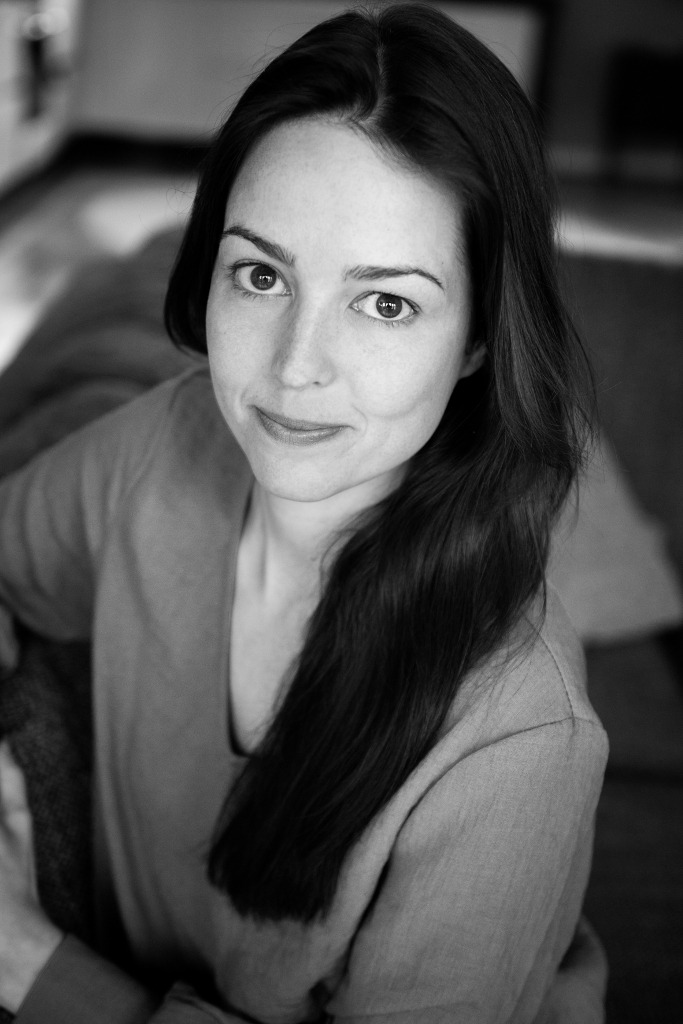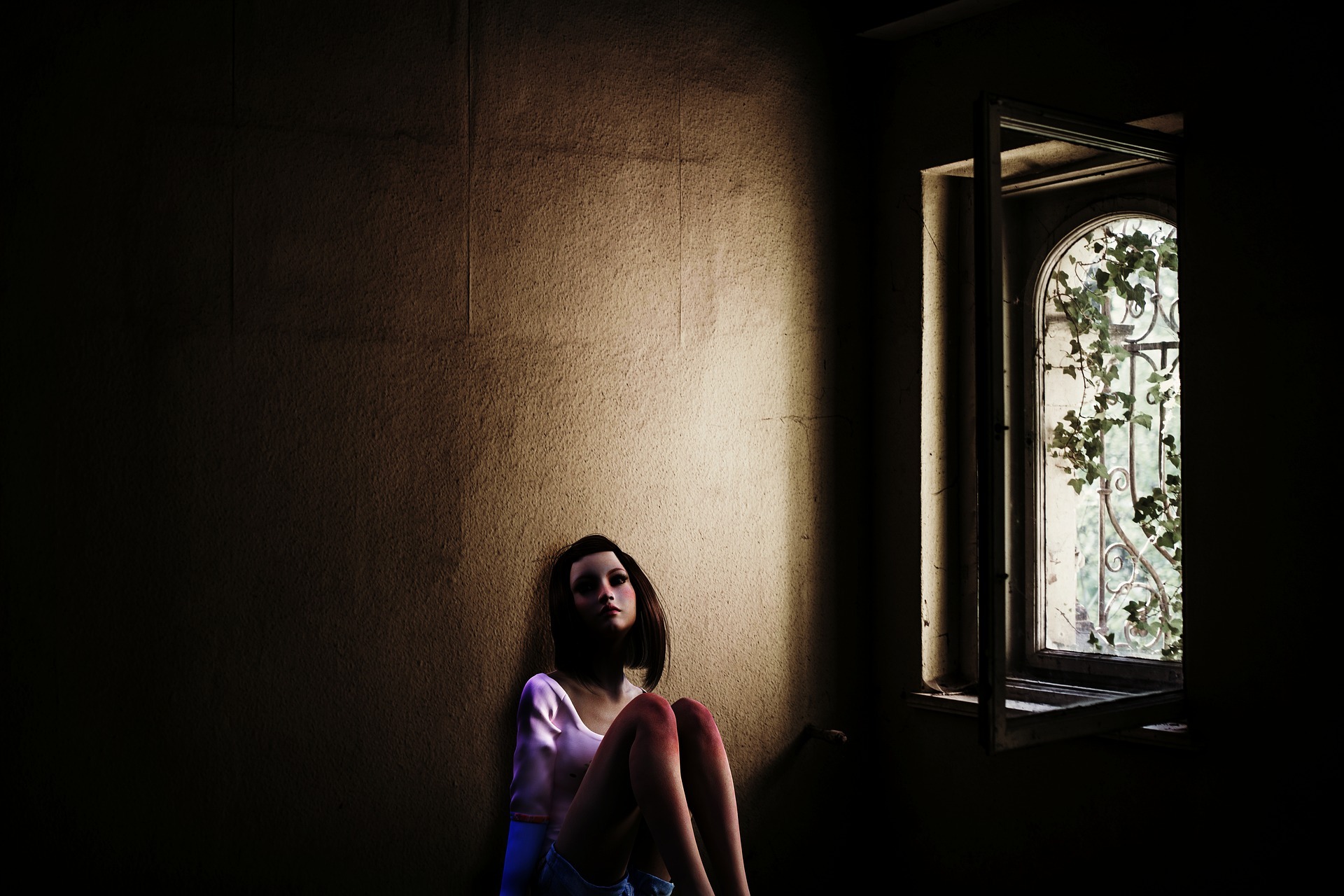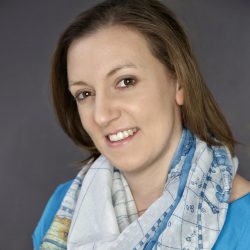Editing a magazine about positive disintegration means I cross paths with a lot of people who have risen, phoenix-like, from the ashes of their own disintegrations. I love to hear these stories, and I love even more to share them—to give others who are entering periods of disintegration a sense that reintegration is possible on the other side.

One of these phoenixes is Lotte van Lith, a coach and therapist in the Netherlands who works with both gifted clients and with those who guide the gifted, including teachers, psychologists, and other coaches. She reached out to us at Third Factor to share how Kazimierz Dabrowski’s theory of positive disintegration (TPD) shaped her understanding of emotional development, and through that, her work with her clients.
Lotte applies TPD in part because it’s been so useful in her own life. That’s why we invited her to sit down and chat with us about her disintegration and share how she grew through times of chaos—including a period of harming herself in a misguided effort to gain control—to become the reintegrated, self-compassionate person she is today.
The Eating Disorder as Disintegration
While Lotte described the home she was raised in as loving and caring, her family life became more chaotic as she approached adolescence. In that crucial period, she said, she felt repeatedly deprived of emotional safety. Her parents divorced when she was twelve, which, of course, had a huge emotional impact on her. She struggled in particular with loneliness, excessive self-analysis, and sensitivity.
As a teenager, Lotte developed an eating disorder. “I was trying to control life, because I felt vulnerable and disconnected,” she said. “Maybe it was also my way of saying to my environment, ‘Please, see me, care for me.’ I retreated into my inner world—a sort of silent protest—and I took the hardships I experienced in our family life out on myself.
“It was an intense crisis of meaning,” she continued. “I asked myself, ‘If this is what life entails, what does it mean then?’ I was utterly sad—on a deep level. And I had these profound experiences of what it means to be a human being and to endure life’s difficulties. It was a period full of inner conflicts and of insights.”
Lotte never received any therapy for her eating disorder. By the age of 23, however, she overcame it through a process she identifies as autopsychotherapy, which in TPD is a level IV dynamism that a person begins to exhibit as they emerge from a period of positive disintegration. Eventually, through this process, she stopped focusing on what she was eating and how much she weighed.
“But of course, I wasn’t finished with emotional understanding,” she said. Her intense emotions remained—and though she had learned not to direct them at her body, she had not figured out what else to do with them. So it’s no surprise, at least in hindsight, that her inner conflicts continued in different forms.
TPD: Giving Words to a Rare but Shared Experience
In 2010, someone saw Lotte’s profile on a dating site and reached out to her. He was a social psychologist, and he was certain he had spotted one of those people sometimes described as “gifted.” One of those people himself, he’d read quite a lot about the theory of positive disintegration (TPD) and thought Lotte might find it interesting. So he wrote to her about it.
Lotte was immediately enthusiastic about the theory. “It resonated with a lot of intuitive insights I’d had throughout the years,” she said. Around that same time, she started therapy to cope with enduring relational conflicts and anxiety that had led to what she described as a core disintegration. “I could see what was happening all that time, when I was living in a fog,” she explained. As she worked through this period of disintegration, she continued exchanging ideas with the man who had introduced her to Dabrowski’s work, with whom she ultimately developed a strong connection.
“When I read about TPD, it gave words to things I already thought or saw in people,” Lotte said. “We experience conflicts, but it’s through these conflicts that we grow. I always had that sort of inner voice deep inside telling me that everything that I experienced was meaningful. I just didn’t know how to verbalize it. Reading about positive disintegration gave meaning to it. In a way, reading intensively about positive disintegration stimulated spontaneous integrations. I was hungry for a sense-making process, so the theory sparked this whole new interest.”
When I read about TPD, it gave words to things I already thought or saw in people. We experience conflicts, but it’s through these conflicts that we grow.
Judging from the stories I’ve heard as the editor of a magazine devoted to introducing TPD to people, Lotte’s experience is not uncommon. Struggles—even disintegrations—in the teen years and early adulthood are certainly common enough. Those disintegrations seem to be particularly acute for a certain type of person: namely, the type with a drive to analyze, a highly active imagination, and above all, intense emotions. These are the people who most often find themselves “immediately enthusiastic,” as Lotte put it, about the theory of positive disintegration.
In Lotte’s case, many core concepts in TPD helped her understand her inner conflicts. She recognized that her way of coping with difficult life experiences—such as the eating disorder—was also strongly related to her intensities. In the language of TPD, we refer to innate traits like this as the first factor. Lotte’s innate intensity made her the type of person who was highly driven and who set ideals for herself, which are key indicators in TPD that a person is likely to disintegrate—and then reintegrate at a higher level.
“When I was younger, the ideal was this image that I projected upon my own body,” she explained. At first, that ideal was rough, shaped to a significant degree by external forces such as culture and my upbringing (the second factor, to use TPD’s terminology) and directed to a harmful degree at her body. But even in this unhealthy situation, she learned something important and positive about herself: that she could concentrate her mental energy, develop a sense of agency, and work toward an ideal. “That was part of my internal awareness already: I can imagine a future, and I can work toward that future,” she explained.

In Lotte’s case, her pursuit of an ideal was directly linked to her effort to manage her emotional intensity because it let her escape—at least in her mind—into an idealized future where things would be better. And that, she said, led her to suppress—but not effectively address—her emotions. “It was my way of dealing with the chaotic experience of growing up as an adolescent in a family that disintegrated,” Lotte said. “To escape into the future was really to try to control the present that I didn’t want to accept because it was too harsh. Also, that reality undermined values that I felt were important, such as compassion and authenticity. Of course, I wasn’t ready myself yet to embody compassion.”
As Lotte observed her own behavior, she developed a capacity for self-observation that was simultaneously critical and compassionate. “The more I looked at myself from within, the more I asked myself, ‘What am I doing right now? This is not the way I want to live.’ So I had this development of self-awareness rather than self-consciousness,” she explained.
It was through this kind of self-reflection that she consciously decided to use her capacity to aim for an ideal future in a more positive constructive way—a way that she contrasted sharply with the distorted ideal and anxiety that drove her eating disorder. The way was centered on befriending her emotional reactions.
The Interplay Between Cognition and Emotion
Because she recognized that her intense emotions to situations were at the heart of her struggles, Lotte appreciated TPD’s emphasis on the importance of emotions to personal development. As Third Factor has explained, one of the central concepts of TPD is that of overexcitability, or a response to stimuli that’s significantly stronger than that experienced by an average person. Dabrowski named five domains in which a person might be overexcitable: the intellect, the imagination, the kinesthetic, the five senses, and the emotions. Some people are overexcitable in all five domains, but even these intense types tend to have a dominant OE that colors their experiences.
Lotte recognized quickly that her strongest forms of overexcitability were the emotional and the intellectual OE, both of which she engaged through reading about positive disintegration. “The emotional experience really influences my intellectual questions,” she said. “If I pose an intellectual question, it’s really because I feel something, because I have these—sometimes intensely subtle or layered—emotional experiences, even when I think about abstract concepts. I feel them in particular when I write. I’m also very eager to learn about psychology or philosophy or spirituality—it’s strongly inspired by that emotional OE and the importance of relationships in my life. Through reading positive disintegration, I became more aware of the strong interconnectedness between my cognition and emotions.”
If I pose an intellectual question, it’s really because I feel something. Through reading positive disintegration, I became more aware of the strong interconnectedness between my cognition and emotions.
Lotte van Lith
But overexcitability is a double-edged sword: while this heightened response can enhance a person’s experience of life in some ways, it may also to lead to struggle and pain. “The OEs showcase the relationship between your talents and your vulnerabilities,” she explained. “I have strong emotional OE, so if something happens in my life which saddens me, I have a tendency to really stick with the emotion. I might start to question the meaning of life and my core values. As I see it, this is a vulnerability that’s related to a talent.”
As a therapist, Lotte finds it important to pass on the wisdom she’s gained to others grappling with the conflicts and struggles to which poorly channeled intensity gives rise. One of the key things she wants others to learn is to recognize the strengths hidden in their own vulnerabilities. “The thing I often mention as a teacher is how an eating disorder may already be an expression of a developmental potential—but it is an expression that is constrained and conflicted and lonely. I rejected the norms that were present in my life back then. At that time, I could not yet integrate my sudden and disruptive awareness of all the conflicts inherent in being alive. I was a human being trying to cope with conflict, so I tried to control things through my eating disorder. But the qualities that I used during the eating disorder—having this intense mental concentration and will, doing a lot of research, taking control and creating a different life than I had had—these show you that there’s a person with a talent, a vibrant inner life here, because otherwise, she wouldn’t be able to do this and have a life. It’s conflicted and harmful—and I don’t want to understate the potential severity of these problems—but at the same time and from a certain perspective, it’s also an expression of creativity.”

Creativity as an Outlet for Intensity
Disintegration can manifest itself through plenty of psychological pathologies other than eating disorders. Lotte noted that many of these other pathological efforts to cope with life’s uncertainties, even though they ultimately harm us, may point to intrinsic creativity. This rang true to me. It echoed the interview I did with Michael Long, the creative writing instructor and coauthor of The Molecule of More who talked about the fine line between creativity and madness. This brings us back to the origins of TPD itself: Dabrowski himself studied exemplars of creative achievement and found that they also exhibited periods of disintegration. He himself had a musically gifted friend who committed suicide—a tragedy that launched his search to understand why some talented people struggle so profoundly. And as his theory makes clear, the goal is to make it through that dark night of the soul and start a new day: that is, to reintegrate oneself at a higher level.
Overexcitability has a role to play in the path to reintegration. Lotte sees a role for all five domains: the highly stimulable intellect and imagination play off each other, stimulated by acute senses and abundances of physical energy. And of course, the emotions often light the fire of development in the first place. “For me personally, I feel something is important, and then I see an image of what I want to create and how I want to connect to another person’s life or society in general. But if I don’t have an outlet, it implodes. I’ve learned throughout the years that it’s equally important to shape and re-shape my energetic mental images, in continuous dialogue with practical reality and my environment.”
That’s why Lotte finds it important to make sure that creative, intense adults have an opportunity to let those sparks burn constructively—before they burn out of control. “What I think is very important is that we provide children, adolescents, and adults with the opportunity to feel intense,” she said. “Because the intensity triggers the move toward creative expression. If we try to eliminate the symptoms, we also eliminate the opportunity to become aware of what is living inside of them, and what can be expressed creatively and authentically.”

“For me, personal growth and the creative process are similar, because you might say at one point, ‘This is who I am,’ but in every moment, there is so much movement, with different nuances and dynamics going on,” Lotte continued. “Even if you say ‘This is who I am,’ you’re still full of life. It’s in the contrast of every moment where creativity starts—where it sparks. And it’s in this continuous movement, in being ‘dynamically in balance,’ that we may also recognize the shapes and forms of what we call our personalities, our ideals, and our unique perception of the world.”
Essentially, highly stimulable people take in so much information that they have ample opportunities to transform old, outgrown views into new perspectives that are in keeping with their accumulated wisdom and their refined ideals. “It starts out with a shift in your consciousness,” Lotte said. “Then you’re creative about what that meant and how you can work with that.”
Paying It Forward
Lotte works now to help other intense people to engage with and experience this self-creative process. An important cornerstone of her therapeutic work is making space for their intense feelings. She told me a story of meeting a woman whose strong emotional life she sensed immediately, but who clearly believed she had to keep it constrained. “Her physical appearance was neat, controlled, her body movements were fixed and controlled, very polite,” Lotte said. “But I sensed a really strong emotional intensity. So I thought, it would be great if in this process, I could create space for that intensity to be accepted.
“I asked her to draw a circle and write the word “emotion” above it, to associate around it. What pops up? At first, she didn’t know what to do. She wanted more structure, more feedback about what to do. I tried to invite her to work with it as an open exercise. And then, after she passed those insecurities, she really exploded in creativity. There was a dimension in life that she hadn’t been aware of before, and she suddenly recognized it. It was such a great experience to see a person open that up. It’s an example of what I often try to do as a coach, especially for gifted people. They have so many views, perspectives, intensities already, I try to invite them to work in an open manner with themselves—to unbox them. You start to see what is inside of them, rather than what they do to try to fit a particular structure. It’s often quite scary—but because they’re quite autonomous, it often works out really well.
Of course, there is no single framework for development that fits everyone, or even everyone in a group with some shared characteristic (such as “giftedness”), as Lotte was quick to note. “Gifted people are extremely diverse, and for some of them, my way of working and being may not fit that well. But generally speaking, I think it is very important to create these safe spaces for their creative self-exploration.”
At the same time, some experiences may be more common than an individual experiencing them may realize. One example is the sense that society doesn’t know quite what to do with intense people like the woman Lotte coached. We shove square pegs into round holes—or rather, feeling different, the square pegs often try to wedge themselves into them. “You have strong emotions about something, and a strong sense of self, but they’re not received and mirrored,” Lotte said. “That’s really confusing feedback. Everything inside is saying ‘This is really important,’ and everything around you is saying ‘Who cares?’
“Not being mirrored by people around you is one of the most confusing social states to navigate,” she added. “And quite a lot of gifted and intense people weren’t mirrored when they were younger or when they experienced hardships. So they may retreat inside and don’t express themselves fully anymore, and it becomes a vicious circle where they will not get mirrored by others—even if they finally find people who are more like them—because they’re not expressing who they really are, what is ‘living inside of them’. So they feel lost, lonely, and disconnected.”
You have strong emotions about something, and a strong sense of self, but they’re not received and mirrored. That’s really confusing feedback. And quite a lot of gifted and intense people weren’t mirrored when they were younger or when they experienced hardships.
Lotte van Lith
As a teacher and coach, Lotte encourages mental health professionals to refrain from labeling these people as having anything wrong with them. The reason, she said, is because a label of wrongness will discourage them; they may even come to see it as defining their reality. After all, many gifted people already have a tremendously sensitive conscience. “If we try to see each other first and foremost from a position of openness, self-awareness and thoughtfulness, that will invite a lot of gifted people to show themselves a lot more,” she said. “We’ll probably be surprised by the creativity that they have to contribute.”

“That safe space, and being thoughtful when it comes to judging, is very important,” Lotte emphasized, particularly when someone is dealing with intense neurotic conflicts. “What’s the really essential aspect when I meet a person, I try to sense why he or she is struggling. It’s probably very logical to be struggling, because life is challenging. It depends on your emotional development and your state of mind at the moment whether you are able to deal with a conflict in a positive, open, and assertive manner. Of course, I also still find this difficult at times, and I’m not always capable of opening up or connecting to others. What I do know is that knowledge of how emotions work in the body and the mind is essential for everyone—and especially the gifted. What does it mean to be an emotional being in this world?”
In short, it means that it’s going to be anything but smooth—but that the capacity for joy is always there. “Life is full of conflicts,” Lotte said. “If I reject those conflicts—and more specifically the emotions involved—I’m rejecting life. Life is this huge emotional pallet. Layered, dynamic, energetic, and highly valuable.”




